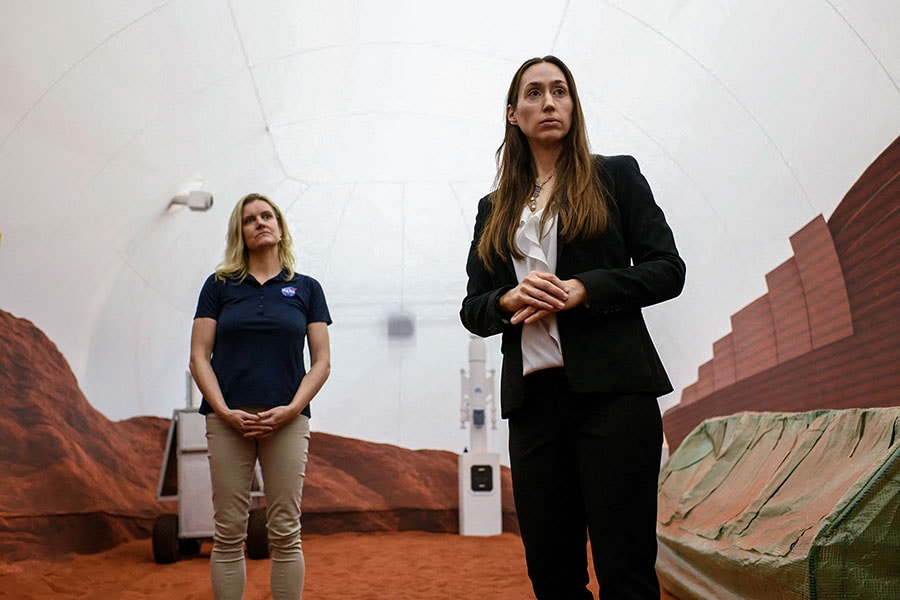
NASA unveils 'Mars' habitat for year-long experiments on Earth
Four volunteers will begin the first trial this summer, during which NASA plans to monitor their physical and mental health to better understand humans' fortitude for such a long isolation
 (L-R) Dr. Suzanne Bell, Lead for NASA’s Behavioral Health and Performance Laboratory, and Dr. Grace Douglas, CHAPEA principal investigator, answer questions from the media in a simulated Mars exterior portion of the CHAPEA’s Mars Dune Alpha.
Image: Mark Felix / AFP
(L-R) Dr. Suzanne Bell, Lead for NASA’s Behavioral Health and Performance Laboratory, and Dr. Grace Douglas, CHAPEA principal investigator, answer questions from the media in a simulated Mars exterior portion of the CHAPEA’s Mars Dune Alpha.
Image: Mark Felix / AFP
Four small rooms, a gym and a lot of red sand—NASA unveiled on Tuesday its new Mars-simulation habitat, in which volunteers will live for a year at a time to test what life will be like on future missions to Earth's neighbor.
The facility, created for three planned experiments called the Crew Health and Performance Exploration Analog (CHAPEA), is located at the US space agency's massive research base in Houston, Texas.
Four volunteers will begin the first trial this summer, during which NASA plans to monitor their physical and mental health to better understand humans' fortitude for such a long isolation.
With that data, NASA will better understand astronauts' "resource use" on Mars, said Grace Douglas, lead researcher on the CHAPEA experiments.
"We can really start to understand how we're supporting them with what we're providing them, and that's going to be really important information to making those critical resource decisions," she said on a press tour of the habitat.







